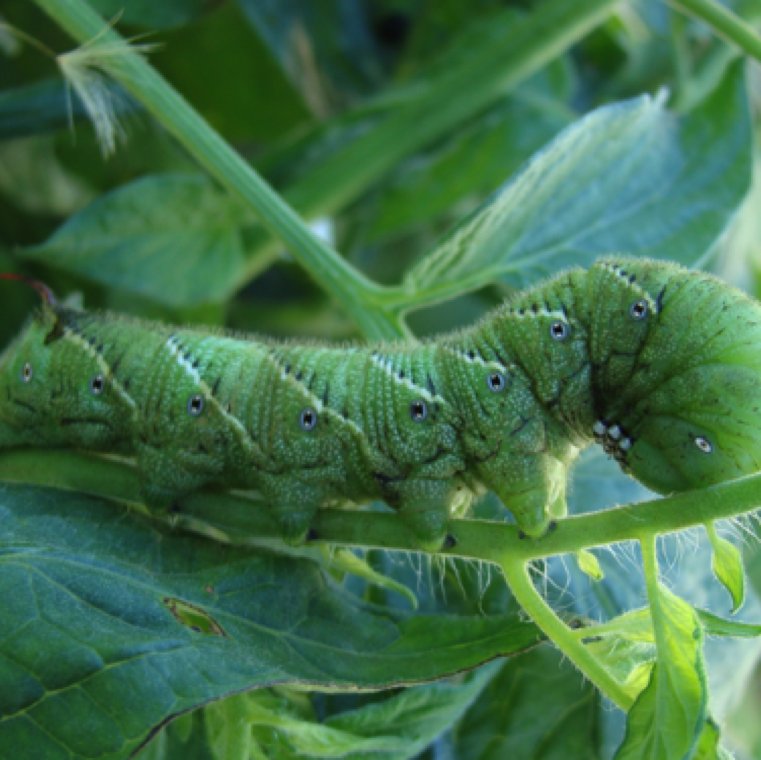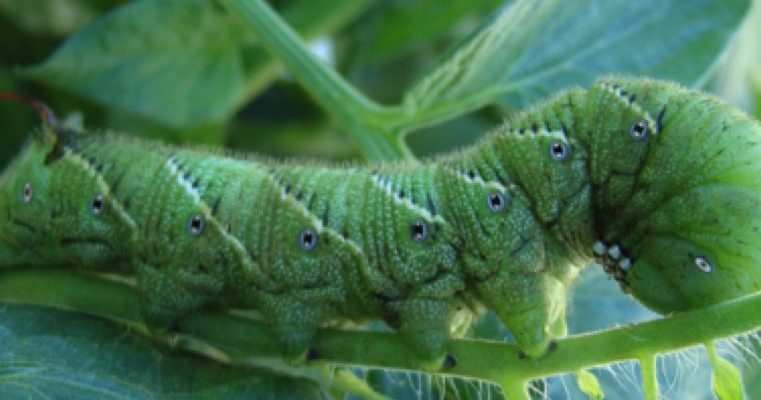
Let’s dive deeper into this topic, because honestly, understanding the relationship between hornworms and leaf curling can feel like unraveling a tangled ball of yarn. You might be surprised to learn that leaf curling isn’t just a random thing. It can also be a sign of stress in your plants, and hornworms could be one of the culprits. So grab your coffee, and let’s explore the ins and outs of this garden dilemma!
What Are Hornworms?
Hornworms are the larval stage of several moth species, primarily the **tobacco hornworm** and the **tomato hornworm**. These caterpillars are known for their distinctive appearance: a plump, green body with a horn-like structure on their rear end. They can grow quite large, sometimes up to 4 inches long, making them hard to miss if they’re munching away on your plants.
In a nutshell, these pests feast on the foliage of plants, primarily tomatoes, peppers, and even eggplants. If you’re a gardener, you might think of them as unwelcome guests at a party, devouring the snacks and leaving chaos in their wake. They might be small, but they can cause significant damage in a short amount of time. You’ll often find holes or ragged edges in the leaves, which can lead you directly to these green munchers.
Here’s a fun fact: hornworms have a pretty short life span. They tend to go from egg to fully grown caterpillar in about 3 to 4 weeks before they transform into moths. That means if you spot them, you’ll want to act fast!
Identifying Leaf Curling
Now that we know what hornworms are, let’s shift our focus to leaf curling. This phenomenon can occur for several reasons, and it’s often a **stress signal** from your plants. Think of your plants as communicating their distress like a dog whimpering when it’s hurt.
Leaf curling can manifest in a few different ways. You might see leaves curling up, down, or even twisting. It can happen on just the edges or affect the entire leaf. But what’s going on beneath the surface? Stress factors like **pest infestations**, **diseases**, and **environmental issues** such as drought or overwatering can all lead to this condition. Sometimes, it’s a combination of things.
For example, if your plant experiences a sudden change in temperature or humidity, it might react by curling its leaves in self-defense. But here’s where it gets interesting: when hornworms chew on the leaves, it can create additional stress, amplifying the curling. So, while the hornworm isn’t the sole reason for leaf curling, it certainly can add to the problem.
How Hornworms Contribute to Leaf Curling
So, you might be wondering, “What’s the connection?” When hornworms feast on a plant’s leaves, they disrupt the normal functioning of the plant. The damage interrupts the plant’s ability to photosynthesize effectively, leading to that telltale curling of the leaves.
This is akin to a person trying to do their job while constantly being interrupted. It becomes difficult to concentrate and perform efficiently! As the hornworms munch away, they essentially put the plant in a state of stress, causing it to curl its leaves as a protective measure.
Additionally, the feeding activity of these pests can weaken the plant’s overall health, making it more susceptible to diseases and other pests. It’s like being on a seesaw: if one side is heavier (in this case, heavy feeding from hornworms), it can throw the balance off, leading to more issues down the line.
Other Causes of Leaf Curling
While hornworms are a significant concern, they’re not the only players in the leaf curling game. Other factors can lead to curling leaves too. Here are some common culprits to keep an eye on:
- Pests: Besides hornworms, aphids, spider mites, and whiteflies can also cause leaf curling.
- Diseases: Fungal and viral infections can affect foliage health. A virus can cause distortion that looks like curling.
- Watering Issues: Overwatering or underwatering can stress plants, leading to curled leaves.
- Nutrient Deficiency: A lack of essential nutrients (like calcium or nitrogen) can disrupt growth and lead to leaf curling.
It’s essential to consider these factors, as addressing them can help restore your plants to their former glory. This is why a holistic approach to plant care is vital. If you notice curled leaves, take a step back and evaluate the overall health of your plant and its environment.
How to Manage Hornworms
If you’ve identified hornworms as the cause of your leaf curling, it’s time to take action. Fortunately, there are a few effective methods to manage these pests, and you don’t need to resort to harsh chemicals or pesticides.
1. **Manual Removal**: Sometimes, the simplest solution is the best. Go on a small garden hunt and look for these green caterpillars on your plants. You can hand-pick them and relocate them far away, like to a nearby field.
2. **Natural Predators**: Encourage beneficial insects like ladybugs and parasitic wasps into your garden. These little helpers can keep hornworm populations in check.
3. **Neem Oil**: Spraying neem oil on your plants can deter hornworms while being gentle on your plants. It works by disrupting their feeding and growth.
4. **Bacillus thuringiensis (Bt)**: This naturally occurring bacteria is safe for plants and pets but lethal for hornworms. Applying Bt can help control their numbers.
By implementing these methods, you can help your plants recover from the stress caused by hornworms and reduce the likelihood of leaf curling.
Preventing Future Issues
Once you’ve dealt with the current hornworm problem, you might be thinking ahead. How can you prevent these pesky pests and the accompanying leaf curling from returning? Well, proactive care can make a world of difference.
– **Rotate Crops**: If possible, rotate the types of plants you grow each season. This disrupts the life cycle of hornworms and makes it harder for them to establish themselves.
– **Regular Inspections**: Get into the habit of inspecting your plants regularly. Early detection can save your garden from major infestations.
– **Healthy Soil**: Strong plants start with good soil. Amending your soil with organic matter can help ensure your plants get the nutrients they need to thrive.
– **Water Wisely**: Aim for consistent watering practices. A well-watered plant is better equipped to handle stress and fend off pests.
By incorporating these practices, you can cultivate a thriving garden that’s more resilient against pests and diseases, including the dreaded hornworm.
In the world of gardening, understanding the various factors that affect plant health is crucial. Hornworms can indeed be linked to leaf curling, but they’re just one piece of the puzzle. By learning how to identify these pests and taking steps to manage and prevent them, you can help your plants flourish.
Remember, healthy plants are better equipped to handle stress and resist pests. So, the next time you see a bit of curling, take a moment to assess the situation, check for hornworms, and consider all the factors at play. With some care and attention, you can keep your garden thriving and vibrant. Happy gardening!

